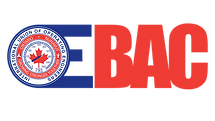Being prepared
Although China remains the epicentre of the COVID-19 outbreak, more countries are reporting cases. Some countries may not have the capacity to detect or contain the disease. This means global efforts to stop the spread of the disease may not be enough to prevent a pandemic (global outbreak).
At this time, the Public Health Agency of Canada (PHAC) has assessed the public health risk associated with COVID-19 as low for the general population in Canada but this could change rapidly. There is an increased risk of more severe outcomes for Canadians:
aged 65 and overwith compromised immune systemswith underlying medical conditions
While a COVID-19 outbreak is not unexpected in Canada, our public health system is prepared to respond. PHAC, along with provincial, territorial and community partners, continues to reassess the public health risk, based on the best available evidence as the situation evolves.
In order to mitigate the impacts of COVID-19, everyone has a role to play. It takes more than governments and action from the health sector to protect the health and safety of Canadians. Each of us can help our country be prepared in the event of an emergency by understanding how coronavirus spreads and how to prevent illness.
For individuals
Canadians should continue to think ahead about the actions that they can take to stay healthy and prevent the spread of any illness, especially respiratory infections.
Now and always during cold and flu season, stay home if you are sick. Encourage those you know are sick to stay home until they no longer have symptoms.
Since respiratory viruses, such as the one that causes COVID-19, are spread through contact, change how you greet one another. Instead of a handshake, a kiss or a hug, a friendly wave or elbow bump is less likely to expose you to respiratory viruses.
Practise frequent hand hygiene and coughing and sneezing etiquette. Clean and disinfect frequently touched objects and surfaces, such as toys and door handles.
These are the most important ways that you can protect yourself and your family from respiratory illness, including COVID-19.
For communities
Social distancing measures are a way to minimize COVID-19 transmission in the community. This means minimizing close contact with others during the peak of an outbreak. In addition to staying home when ill, we should plan for actions we can take if we need to reduce the spread of infection in places where we gather.
Some of the social distancing measures need extensive preparation, especially where large crowds are concerned. Community planners should prepare for:
interruptions in social supports, reduction in public services like transit and access to community centres, financial consequences from the reduction of services or cancelled events. Planners, administrators and employers must work together to put into effect community-based measures.
For schools and daycares
School and daycare measures can range from simple (like increasing distancing between desks) to more extensive (like closures).
Widespread school closures as a control measure tend to have a high economic and social cost. This is because school closures impact the many families that have one or both parents working outside of the home.
Public health measures for schools and daycare are intended to provide a safer school environment by encouraging:
personal protective measures, communication to teachers and parents, regularly cleaning and disinfecting high-touch surfaces and objects like door handles, toilets and toys
The following measures are alternatives to school or day care closures.
Restrict access to common areas.Divide classes into smaller groups.Cancel or postpone after-school events.Increase desk distance between students.Be flexible with attendance policies for students and staff.
Students and staff who show symptoms of COVID-19 should stay at home.Separate children on school busses by 2 metres where possible.Cancel classes that bring students together from multiple classrooms.Stagger the school schedule (lunch breaks and recess) to limit the number of students and children in attendance at one time.
For more information on guidance for schools and day cares, refer to Public Health Guidance for Schools (K-12) and Childcare Programs (COVID-19).
For workplaces
Employers and employees have a role to play in reducing the spread of infection.
Further information on preparing workplaces for COVID-19 (PDF) is available from the World Health Organization.

Bình luận